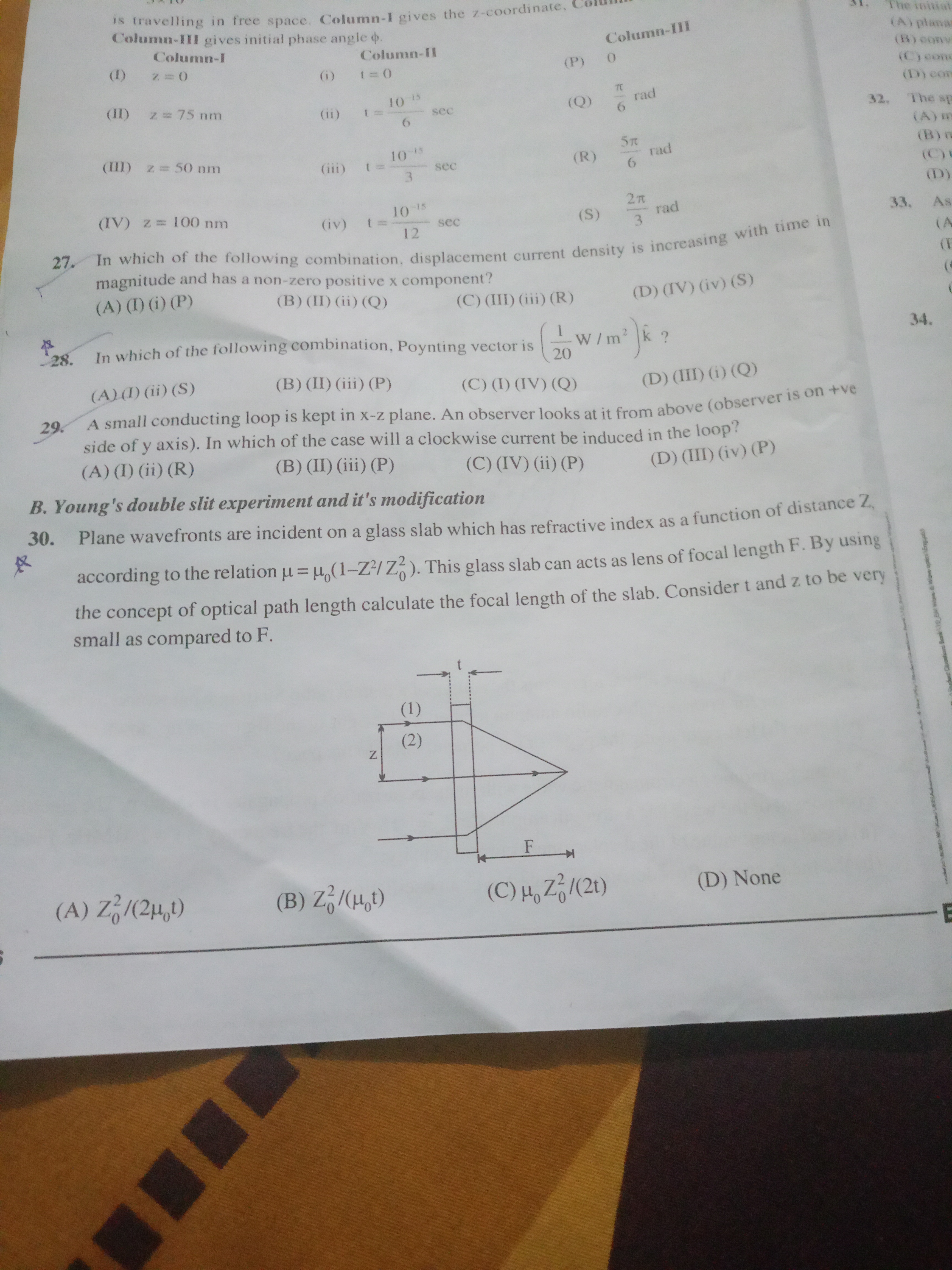Question
Question: Plane wavefronts are incident on a glass slab which has refractive index as a function of distance Z...
Plane wavefronts are incident on a glass slab which has refractive index as a function of distance Z, according to the relation μ=μ0(1−Z2/Z02). This glass slab can acts as lens of focal length F. By using the concept of optical path length calculate the focal length of the slab. Consider t and z to be very small as compared to F.

(2μ0t)Z02
(μ0t)Z02
(2t)μ0Z02
None
(2μ0t)Z02
Solution
We are given a glass slab with refractive index μ=μ0(1−Z2/Z02), where Z is the distance from the axis (along the thickness t). Plane wavefronts are incident on the slab. We need to find the focal length F of the slab.
Consider a ray incident parallel to the axis at a distance Z from the axis. The optical path length travelled by this ray inside the slab of thickness t is OPL(Z)=μ(Z)t=μ0(1−Z2/Z02)t=μ0t−Z02μ0tZ2.
For a plane wavefront incident on a lens, the emerging wavefront is spherical and converges to the focal point F. The optical path length from the incident plane wavefront to the emerging spherical wavefront is constant.
Let the incident plane wavefront be at the left surface of the slab. Let the focal point be at a distance F from the right surface of the slab.
Consider a point on the incident wavefront at a distance Z from the axis. The ray enters the slab at (Z, 0) and exits at (Z, t). After exiting, it travels to the focal point (0, F) in free space. The optical path length from the exit point (Z, t) to the focal point (0, F) is the distance in free space, which is Z2+F2. The refractive index of free space is 1. So the OPL in free space is 1×Z2+F2.
The total optical path length from the incident wavefront to the focal point is the sum of the OPL inside the slab and the OPL in free space.
OPLtotal(Z)=OPLinside(Z)+OPLoutside(Z)=μ(Z)t+Z2+F2.
For a lens forming a sharp focus, the total OPL from the incident plane wavefront to the focal point must be the same for all rays. Let the OPL along the axis (Z=0) be OPL0.
OPL0=μ(0)t+02+F2=μ0t+F.
So, for any Z, OPLtotal(Z)=OPL0.
μ0t−Z02μ0tZ2+Z2+F2=μ0t+F.
Z2+F2=F+Z02μ0tZ2.
We are given that t and z are very small compared to F. We can use the binomial approximation for Z2+F2:
Z2+F2=F1+Z2/F2≈F(1+21F2Z2)=F+2FZ2.
Substituting this into the equation:
F+2FZ2=F+Z02μ0tZ2.
2FZ2=Z02μ0tZ2.
This equation must hold for any small Z. So we can cancel Z2 (assuming Z=0).
2F1=Z02μ0t.
F=2μ0tZ02.
This is the focal length of the slab acting as a lens. Since parallel rays converge after passing through the slab, it acts as a converging lens.
